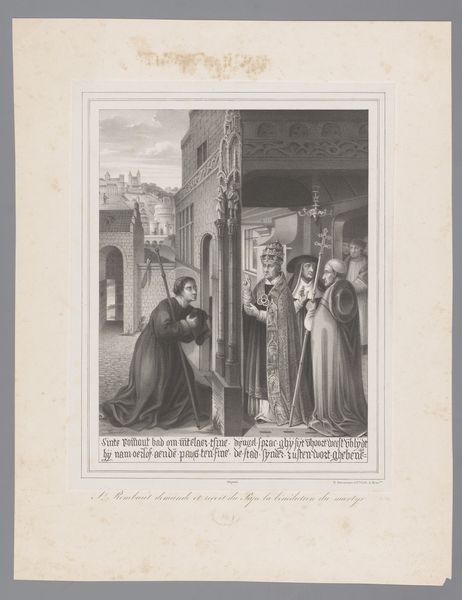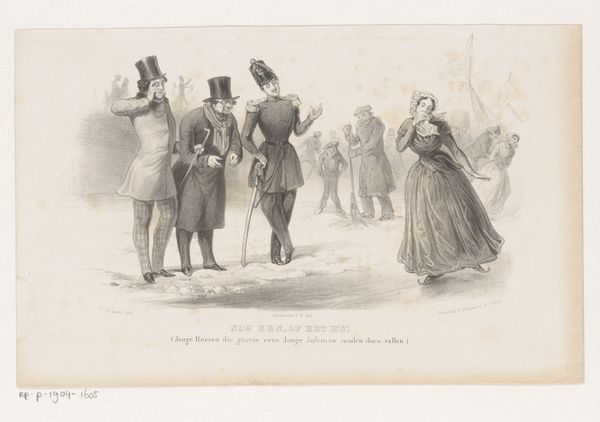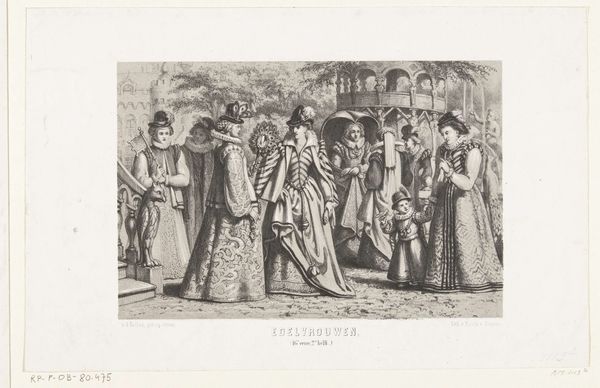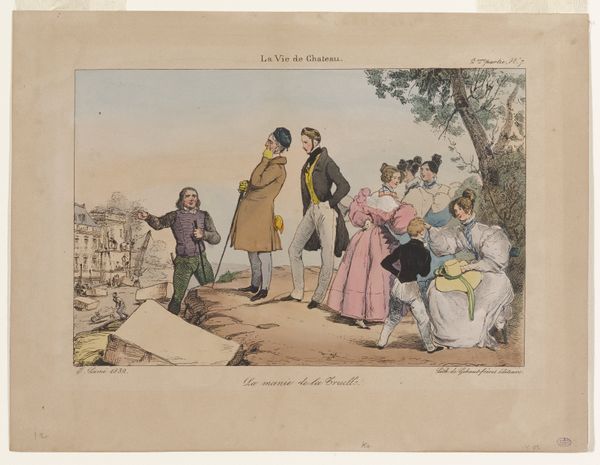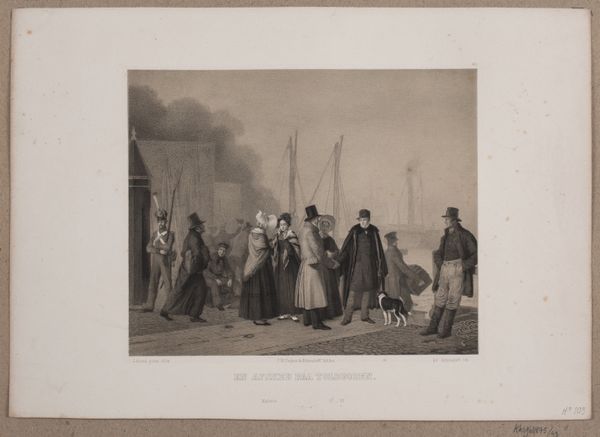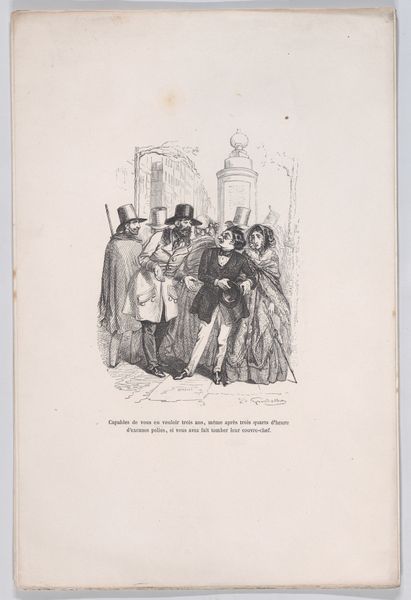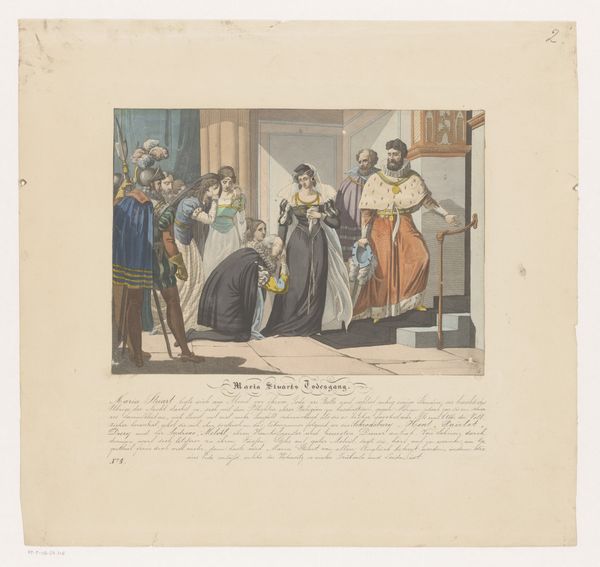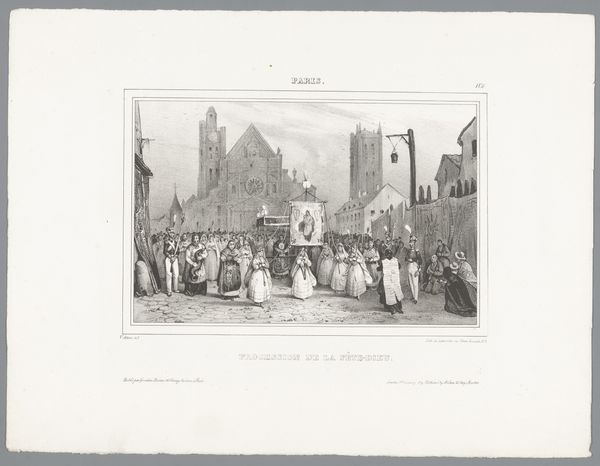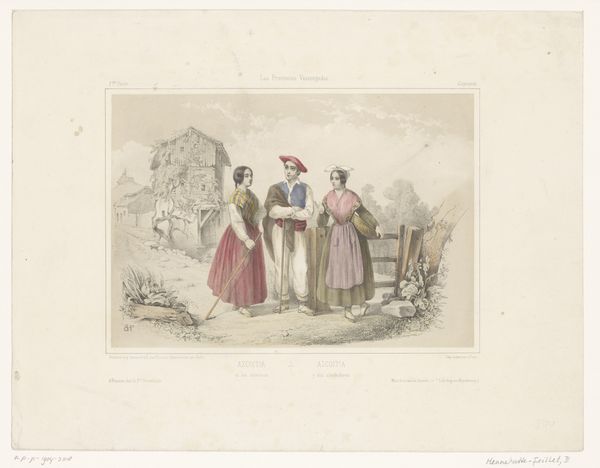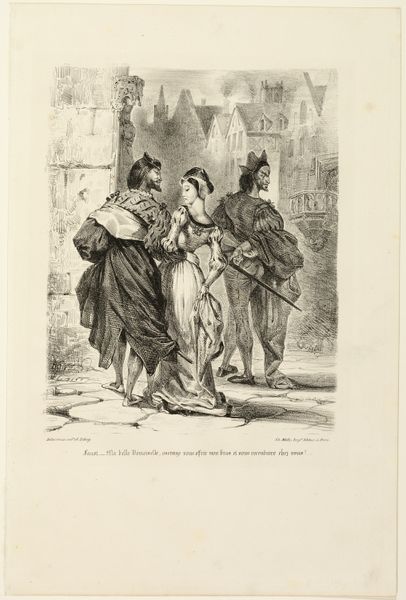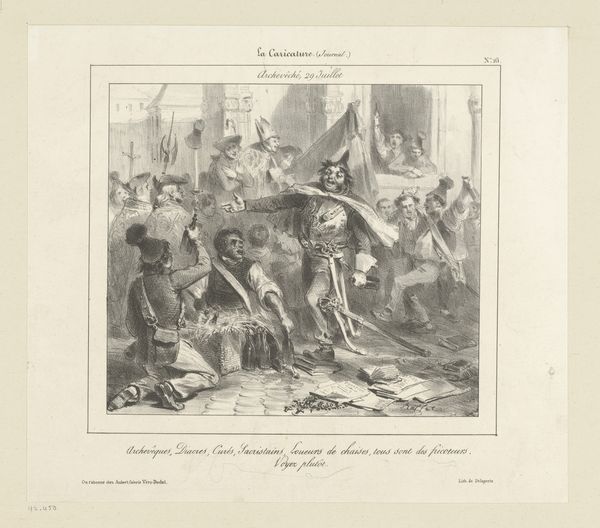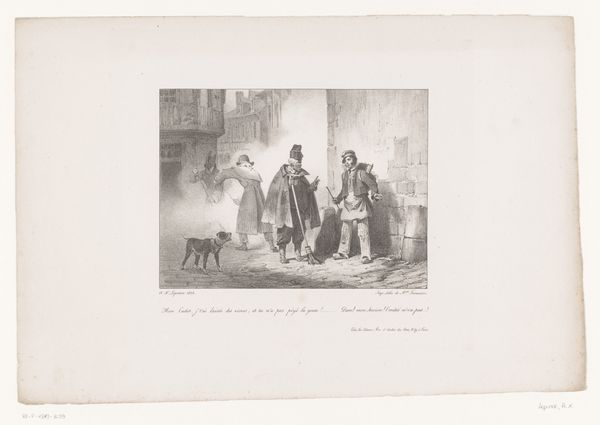
Dimensions: height 538 mm, width 694 mm
Copyright: Rijks Museum: Open Domain
Editor: Standing before us is "Sixteenth-Century Nobles and Burghers," painted between 1878 and 1881 by Hendrik Albert van Trigt. It's a watercolor piece depicting figures in what I presume are period costumes. I immediately get a sense of a staged tableau vivant, a kind of historical reenactment. The color palette feels muted, almost sepia-toned, which lends to its old-world atmosphere. What stands out to you most when you look at this artwork? Curator: Oh, a tableau vivant, perfectly put! Yes, it has that posed, slightly self-conscious quality that you see in reenactments. I wonder if Van Trigt wasn't just depicting history, but also commenting on how the 19th century *saw* history – filtered through romantic lenses and a bit of nostalgic longing. Notice how meticulously rendered the clothing is, each fold and trim? He's less interested in grit, you know, the daily life of the 16th century, and more in crafting an image of courtly elegance. It’s interesting, don’t you think, that he chooses watercolor, which, despite the detail, gives it an ethereal, dreamlike feel. Makes it less about historical accuracy and more about…well, a beautiful imagining of the past. Editor: That's a clever observation about the medium lending to that "dreamlike" feel. I hadn’t thought of it that way! Do you think the figures themselves are meant to be symbolic, representing larger societal groups of that era? Curator: Absolutely. Each figure contributes to the visual narrative of the period—the contrast between the rich, bejeweled figures and the simpler attire in the background speaks volumes. Van Trigt subtly emphasizes not just the clothing and material culture but also the relationships within social strata of 16th century society. He presents to us an idealized snapshot, where hierarchy is as carefully constructed as the arrangement of colors and shapes in a painting, and both whisper of a world both distant, and undeniably connected, to our own. Editor: So, it's not just history painting; it's a commentary on how history is remembered and idealized. Curator: Precisely. A delicate dance between the past, present, and the very act of looking. Food for thought, eh? Editor: Absolutely! I'll certainly never look at historical genre paintings the same way again. Thank you!
Comments
No comments
Be the first to comment and join the conversation on the ultimate creative platform.
